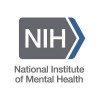
The Effect of Tocilizumab on Procalcitonin and Other Biochemical and Clinical Markers in the Setting...
COVID-19 PneumoniaARDSThis study aims to establish whether tocilizumab has any significant effect on procalcitonin levels on patients diagnosed with COVID-19 pneumonia requiring intensive care admission. The effects on other biochemical and clinical markers are also considered.

Evaluation of Peripheral Muscle With Ultrassonografic of Critical Patients With Covid-19
COVID-19 Respiratory InfectionCurrently, the tools available for assessing peripheral muscle dysfunction in the intensive care setting require patient collaboration. Several studies have shown that peripheral muscle ultrasound is capable of reliably detecting morphological changes in critically ill patients, in addition to contributing to the identification of patients at higher risk of prolonged complications, especially when performed daily. In this sense, a valid, non-volitional alternative capable of determining muscle mass is through ultrasound assessment. However, current studies are characterized by a lack of standardization in their protocols, which include proper positioning of limbs, transducer, clear reference points and techniques for better visualization of the assessed muscle, in addition to significant methodological defects and inadequate sample sizes. We believe that, together with a tool capable of determining muscle mass and being a safe and non-invasive method, we can contribute to a more complete assessment of these patients, exploring outcomes such as survival, length of stay in the ICU, extubation success and functional capacity. In addition to having the potential to serve as a biomarker of muscle strength during rehabilitation, given little knowledge about the long-term physical consequences of COVID-19, thus promoting a more complete assessment, exploring morphological characteristics of the peripheral muscles resulting from the hospitalization process. and assisting the physiotherapist in clinical decision making in rehabilitation.

Macrophage Activation Markers in COVID-19 Patients
COVID-19This study is aiming to find the relation between the severity of COVID-19 in diabetic and obese patients and the high serum levels of matrix metalloproteinase-7 (MMP-7),matrix metalloproteinase-9 (MMP-9), TGF-β and PDGF Macrophage Activation Markers

Effectiveness of Convalescent Plasma in Hospitalized Patients With COVID-19
Covid19Multicenter retrospective cohort study from June to August 2020 on hospitalized COVID-19 patients admitted to Al-Hakeem and Al-Amal hospital in Al-Najaf Governorate, Iraq, in order to evaluating the effectiveness of plasma therapy in hospitalized patients with COVID-19 and analyzing factors that affect therapeutic outcome, either related to patients or related to donors.

SARS-CoV-2 Pre-exposure Prophylaxis With Ivermectin Retrospective Cohort Study
Covid19This observational study, a multicenter retrospective cohort database study, carried out in two medical centers, Centro Medico Bournigal (CMBO) in Puerto Plata and Centro Medico Punta Cana (CMPC) in Punta Cana, Dominican Republic, sought to determine whether Ivermectin, at a weekly orally dose of 0.2 mg/kg, is an effective pre-exposure prophylactic method (PrEP) for the spread of Severe Acute Respiratory Syndrome Coronavirus 2 (SARS-CoV-2), in the healthcare workers. The study began on June 29, 2020 and ended on July 26, 2020 (4 weeks).

Clinical Efficiency of Surgical Masks and Filtering Face-piece 2 Masks
Covid19Recent results demonstrated an increased risk of COVID-19 infection among healthcare workers (HCW), particularly when access to personal protective equipment (PPE) was inadequate. (ref). During the COVID-19 pandemic, access to PPE has become complicated by a surge in worldwide demand combined with production limitations and logistical barriers. Since their introduction in hospitals in the 1990s, filtering facepiece (FFP) masks, mostly of the FFP2 type, are used by HCWs to protect themselves against bioaerosols due to tuberculosis, measles, and selected respiratory viruses. The COVID-19 pandemic has sparked debate around reasonable and safe use of the different types of face masks to protect the HCWs who provide direct care for COVID-19 patients. At the heart of the discussion are the respective contributions to SARS-CoV-2 transmissions by droplets and aerosols, and the corresponding risk levels resulting in COVID-19 infection. The objective is to perform a cluster-randomized, parallel, controlled, non-inferiority study among Swiss nursing and retirement homes to evaluate the efficacy of surgical masks vs. FFP2 masks during patient care and prospectively observe possible infections amongst both vaccinated and unvaccinated staff. Staff in nursing homes will be randomized to use either surgical or FFP2 masks for patient care consistently. Considering an attack rate of 0.8% over three months among healthcare workers, a non-inferiority margin of 5%, and an intracluster variability of 0.01, - we require a minimum of 625 participants per group. The COVID-19 attack rate will be tested by initial serology testing and weekly pooled saliva specimen for SARS-CoV-2 testing. (Re)-Infections will be tracked by weekly pooled saliva-based PCR testing. Exposure to COVID-19 other than during work time will be explored by questionnaires and focus group discussions.

Emotional, Social, Cognitive and Behavioral Sequalae of the COVID-19 Pandemic
Healthy VolunteerBackground: COVID-19 has caused a high rate of deaths. The steps taken to control its spread have caused social isolation, changes in lifestyle, economic turmoil, and increased work-related stress. As a result, there has been a rise in mental and physical health problems. These burdens are particularly severe for people with a history of mental illness. Researchers want to learn more about the relationship between stressors related to COVID-19 and self-rated measures of anxiety and other variables. Objective: To better understand the impact of this stressful time on people s lives and families. Also, to learn the strategies people have been using to deal with the COVID-19 pandemic. Eligibility: Adults ages 18 and older. Design: This is an online study. Participants will fill out surveys online. The surveys will ask about their mood, anxiety, medical history, substance use, and COVID-19 stressors. Participants will complete an online task. For the task, they will stare at the center of a computer screen. When they see certain images, they will indicate the location of that image as quickly as possible. It will take about 1.5 hours for participants to complete the surveys and tasks. They may be contacted again if additional data is needed. Some participants may have taken part in other NIH studies. If so, their new data may be linked to their previously collected data. ...

Prediction of Thrombosis Using D-dimer Trends in COVID-19
Covid19A high incidence of venous thromboembolic events (VTE) has been demonstrated in COVID-19. This incidence correlates with disease severity. Activation of coagulation secondary to sepsis combined with classical thrombotic risk factors may contribute to this prothrombotic state. Since the beginning of March 2020, the issue of venous thrombosis during SARS-CoV-2 infection has rapidly emerged as a major medical challenge since a significant rate of patients were thrombosing, some of them in spite of a well conducted preventive anticoagulation. Although D-dimers have been shown to be useful in identifying patients at risk of severe COVID-19 and even mortality, they cannot be used for diagnostic exclusion of pulmonary embolism. Indeed, since D-dimer levels rise non-specifically during infectious states, the exclusion threshold of 500 ng/ml cannot be used. It would therefore be useful to study the predictive value of D-dimers for thrombosis in COVID-19 patients.

SARS-CoV-2/COVID-19 Infection Among Health Care Workers
SARS-CoV-2BCG2 moreThe present study finds opportunities and justifications, taking into consideration that the nature of professional practice in health needs scientific evidence resulting from systematic and systemic studies to strengthen the basis for the decisions made to have an impact on various levels, from the patient to health management itself. In addition, Cabo Verdean authorities may benefit from new evidence obtained by this study. It intends, in a growing number of health professionals exposed or infected with SARS-CoV-2, in the different health structures of the country, to contribute to substantiate a better perception of the problem and the required solutions. Therefore, assessing the potential risk factors for SARS-CoV-2 infection among healthcare workers will be essential to characterize virus transmission, preventing future infections in them and providing the associated healthcare. Due to the advances and important changes described, questions arise that guide this research and allow us to identify the problem.

Mucosal Immunity Against SARS-CoV-2 Infection in COVID-19 Patients
SARS-CoV-2 InfectionIn this study nasal fluid (mucosal lining fluid), nose and throat swabs and blood was collected from patients with a confirmed SARS-CoV-2 infection who remained in home isolation, as well as from their household contacts who remained in home quarantine. On the collected nose and throat swabs a coronavirus PCR was performed. Antibodies against SARS-CoV-2 were measured in the mucosal lining fluid and blood samples.
